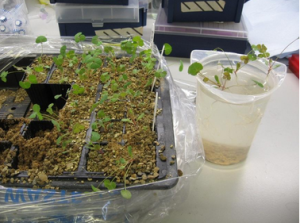Good Teachers, Mean Teachers
I am Alice, and I am 10 years old.
My hobby is writing, and I really like English and Spelling, maybe because I find them easy.
I used to have a hamster, Nibbles, but he escaped and we haven’t seen him since. I like animals, very much, but I don’t think I am great with them.
This article is about my school teachers.
What Does Brexit Mean for Kids?
The British have voted to leave the European Union, but what does this mean, and what does Brexit mean for kids?
Most of you will have heard of the EU Referendum, known as BREXIT (which stands for BRitish Exit). If you don’t know what a referendum is, then this is a good place to find out more.
We asked some of our readers what questions they had about BREXIT. These questions are difficult to answer right now because even the experts don’t know exactly what will happen, but here’s what we know so far. If you have any questions, comment on this post and we’ll try to find the answers for you.
A Day In the Life Of…a Biologist
Ever wondered what being a biologist might be like? No two scientists work days are the same but I’m going to take you through my typical day to give you an idea
7 AM: I get up and eat breakfast (toast and a cup of tea) before travelling to work.
8 AM: I arrive at work (this is early for scientists, most of my workmates arrive at about 9 AM but I like to get up early!) After checking my email the first job of the day is to turn on the microscope above.

The plant root surface is covered in root hairs. This is what they look like under a microscope.To get an idea of the cells, les than 1mm of plant root can be seen in this image
It is similar to microscopes you may have used at school but with a few added features including a special camera. I am fascinated by plants and in my research I am trying to find out more about how some plants (including peas and beans) can form a friendly relationship (known as symbiosis) with soil bacteria, which provide nutrients that the plants need to grow. I use the microscope and camera to study living cells in plant seedling roots (where the symbiosis is set up).
10:30 AM: Tea break and seminar. I have a tea break with some of my workmates and then go to a seminar where other scientists talk about their research and we discuss it afterwards. Seminars are a great way to find out what experiments other scientists are doing, and to get ideas for new experiments to try.
12:30 PM: I have lunch with my friends.
1:15 PM: More experiments. For some of my experiments I have to grow plants in greenhouses. Today I visit to check on my plants and collect some to take measurements. This involves digging up the plants and cleaning them to look at their roots. This is fun, but messy!
3:30 PM: Afternoon tea break.
3:45 PM: Data analysis. I spend the last part of the afternoon drawing graphs of the data I have collected today and thinking about what it shows (does it answer the research question? Do I need to do further experiments?). I also spend some time reading research articles to find out about experiments other scientists have been doing.
5:30 PM: Hometime! Once I am home I have dinner and then relax.
One of the things I love about being a scientist is the feeling of discovering the “unknown”. The experiments I carry out reveal little details that when combined with other scientist’s data can help us build up a picture of how the plant-bacteria symbiosis is set up so that pea and bean plants can get the nutrients they need to grow. We hope that this knowledge might be able to help improve farming in the future.
About the Author
Sarah Shailes is a plant scientist working at the John Innes Centre, Norwich, UK. She studies how some plants can form a friendly relationship (symbiosis) with soil bacteria, which help the plants gain nutrients they need to grow. When she isn’t in the laboratory she enjoys knitting and hiking, and helps run a local Brownie Guide unit.
What is The Point in Learning … History
Have you ever sat in a Maths class wondering if you will ever have to do long division without a calculator once you leave school? Or silently cursed your Geography teacher while learning about the formation of oxbow lakes?
And History? That’s all in the past and irrelevant, isn’t it? In this series of articles, we will look at some of the subjects we learn at school, and try and answer the question: What’s the point in learning this?
Last time we looked at uses of Physics, both in day to day life, and in careers. Today we will focus on History – the study of the past and how our society came to be as it is. Here are some ways in which studying History is useful to us:
Critical Thinking

Thinking by Elisabeth Haslam
When we study history we don’t just learn lists of facts and dates off by heart. We read lots of opinions about what happened and why, and come to our own conclusion. We base these opinions on two types of material, primary sources which are texts and drawings created at the time of the history we are studying, and secondary sources which were written after the event.





